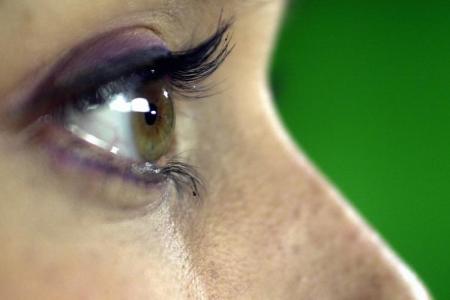Eye on Lasik
Eye doctors discuss side effects and risks of Lasik surgery and how to reduce them
Lasik is the most frequently performed procedure to correct myopia (short-sightedness) and astigmatism, said Dr Cordelia Chan, consultant eye surgeon at Eye Surgeons @ Novena / Ophthalmic Consultants.
However, it is not without risks and side effects.
WHAT IT INVOLVES
Myopia-correcting surgery is also known as refractive surgery.
According to Dr Christopher Khng, consultant ophthalmologist and medical director of Eyewise Vision Clinic, it can be done through Lasik or PRK (photorefractive keratectomy) carried out on the cornea.
Another option would be implantable collamer lenses.
"In Lasik, a corneal flap is created with an automated blade or a laser," said Dr Khng.
"Then it is lifted out of the way, and the degree correction is lasered onto the remaining corneal bed.
"This reshapes the cornea so the eye has the desired degree correction. The flap is then put back into place. The procedure is painless and takes 10 to 15 minutes."
COMMON SIDE EFFECTS
Surgery to correct myopia promises perfect vision, but not all patients have the same positive experience.
Lasik has potential side effects, such as eye dryness due to the creation of the corneal flap and the effect of the laser on the cornea.
Fortunately, the problem usually doesn't last more than one to three months.
Seeing halos and starbursts are also common.
Said Dr Khng: "Patients with high myopia, or those with relatively higher amounts of astigmatism, are more likely to see starbursts and halos.
"An additional risk factor is a large pupil size."
WHAT YOU MAY NOT KNOW
Myopia-correcting surgery has a long track record of safety, but here are the risk factors to note.
Some patients may experience post-Lasik ectasia, where the cornea becomes unstable.
However, the incidence rate of this is reportedly only 0.04 per cent to 0.6 per cent.
Corneal flaps can also become wrinkled or damaged during Lasik surgery, said Dr Khng. Even in the best scenario, the flaps never adhere strongly to the corneal bed after healing.
Although this makes it easy if follow-up surgery is needed, the flap is vulnerable to injury and prone to being dislodged.
In very rare cases, infection in the flap can lead to blindness.
After Lasik, there is still a chance that your old degree will come back, said Dr Chan, especially in highly myopic patients. Usually, surgeons will over-correct slightly to account for this.
Also, should you need cataract or glaucoma procedures in the future, there could be issues.
In cataract surgery, the lens inside your eye is replaced with an artificial one to restore clear vision.
"As the patient's corneas are permanently changed by Lasik, the lens calculations become difficult when a patient needs cataract surgery later in life," said Dr Khng.
This means you would need glasses to see well now.
In glaucoma, there is increased pressure on the eyeball, which can damage the optic nerve. Eye-pressure readings, which are necessary for glaucoma patients, may be troublesome because Lasik leads to thinning of the cornea.
Your doctor needs to apply pressure adjustment, and this might lead to incorrect low eye-pressure readings, said Dr Khng.
WAVEFRONT TECHNOLOGY
Dr Mohamad Rosman, head and senior consultant of the refractive surgery department & Laser Vision Centre at the Singapore National Eye Centre, added that patients with higher risks, such as those with pre-existing dry eyes or are highly myopic,can consider wavefront technology to reduce the risks.
This allows for a more precise procedure as your eyes' characteristics are evaluated.
Copyright: 2017 SPH Magazines
Get The New Paper on your phone with the free TNP app. Download from the Apple App Store or Google Play Store now



